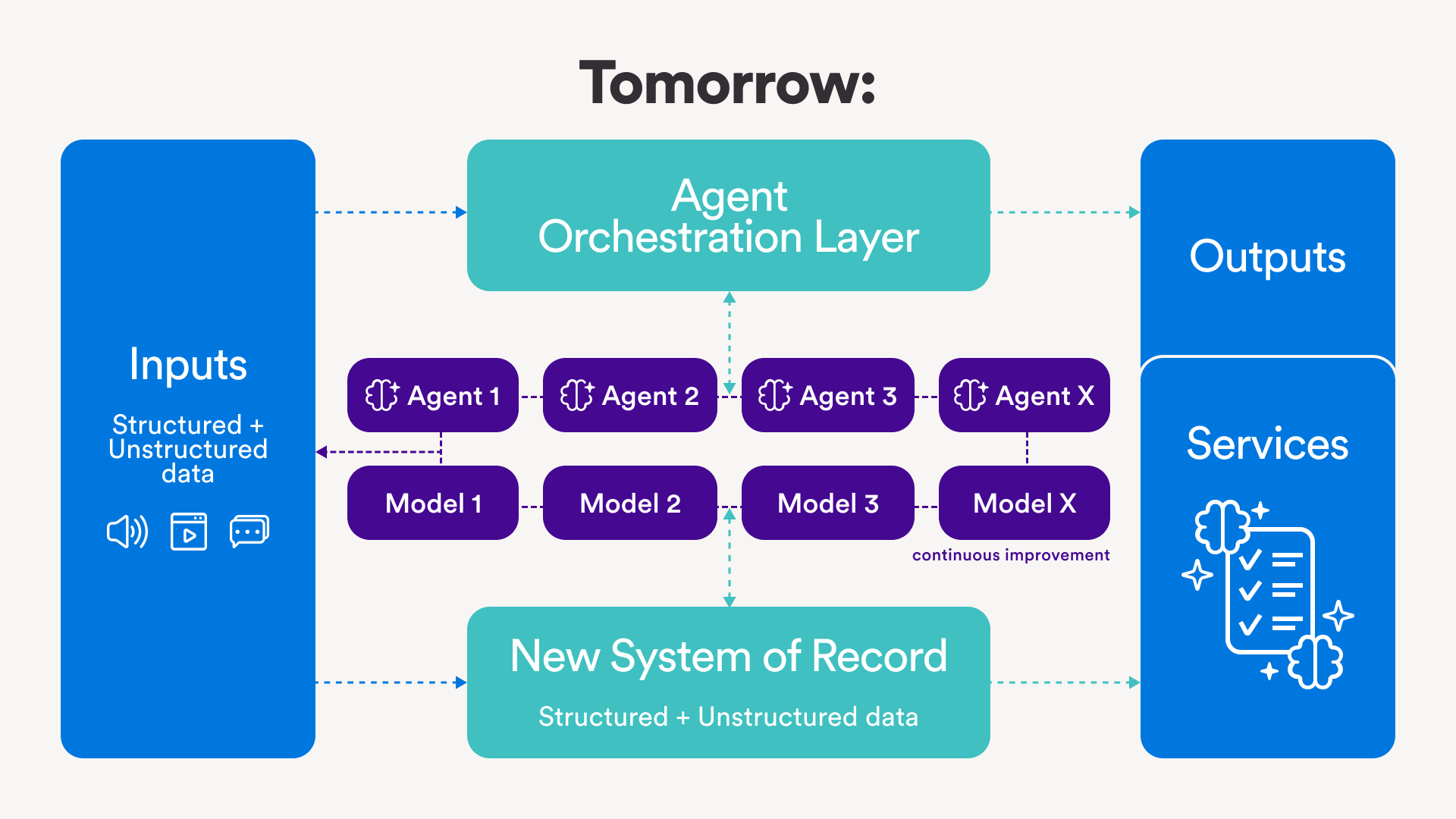
The $4.6 Trillion Opportunity in Systems of Agents
- By AIM Research
- Published on
Systems of Agents redefine software by introducing autonomous AI-driven workflows, unlocking a $4.6 trillion opportunity.


The software industry is undergoing a paradigm shift, moving beyond traditional Software-as-a-Service (SaaS) to embrace the transformative concept of Systems of Agents. Unlike conventional tools that require human input, Systems of Agents consist of autonomous, AI-driven entities capable of making decisions, acting independently, and continuously improving.
This evolution is not just an incremental improvement; it is a reimagining of how software operates. By unlocking $4.6 trillion in potential value, this approach enables businesses to redefine workflows, automate decision-making, and scale operations with unprecedented efficiency. However, it also raises concerns about practicality, scalability, and ethical implications.
SaaS revolutionized how businesses access software, offering scalability and flexibility. Yet, its focus has largely been on enabling processes rather than transforming them. Enter the Service-as-Software framework, powered by Systems of Agents, which takes this a step further by delivering action-oriented automation.

Systems of Agents stand out due to their unique capabilities:
Data Capture at the Source
Traditional systems rely heavily on manual data input. Systems of Agents integrate directly with data sources such as IoT devices, enterprise platforms, or customer interactions, ensuring seamless and real-time data capture.
Outcome-Oriented Pricing
Instead of license-based pricing, Systems of Agents align costs with measurable outcomes. This model prioritizes value creation, making it easier for businesses to justify investments.
24/7 Scalability
AI agents work tirelessly, operating around the clock to unlock new opportunities in sectors such as logistics, e-commerce, and healthcare, where continuous operation is critical.
AI-Driven Decision Making
Agents collaborate, share insights, and divide tasks efficiently, enabling organizations to solve complex, cross-functional challenges without bottlenecks.
While the benefits are enticing, the adoption of Systems of Agents is not without controversy:
Job Displacement
The automation of entire workflows has sparked debates about potential job losses. Advocates argue that these systems will complement human workers by handling repetitive tasks, but skeptics warn of significant disruptions to the workforce.
Ethical and Accountability Concerns
Who is accountable when an AI agent makes a wrong decision? The autonomy of these agents raises critical questions about bias, privacy, and ethical standards that businesses must address.
Operational Complexity
Implementing a System of Agents requires robust infrastructure and seamless integration. Critics argue that these requirements might deter smaller businesses, creating a divide in adoption.
Data Dependence
Agents rely on large volumes of proprietary data to function effectively, leading to concerns about data ownership, security, and the risks of vendor lock-in.
Early adopters of Systems of Agents are pioneering applications across various industries:
Healthcare
AI agents revolutionize healthcare by reducing administrative burdens and improving diagnostic accuracy. Examples include:
Customer Support
In customer service, AI agents handle queries and resolve issues round the clock. This improves response times, reduces operational costs, and enhances customer satisfaction.
Logistics
Agents optimize supply chains, manage inventory, and coordinate real-time deliveries, dynamically adjusting based on traffic patterns and demand forecasts.
Finance
Banks deploy agents for fraud detection, compliance management, and transaction processing, reducing risks and increasing efficiency.

For businesses seeking to leverage Systems of Agents, these strategies can help unlock their potential:
Capture Data at Its Source
Owning the interface where data originates reduces errors and ensures reliable decision-making. Seamless data capture is a cornerstone of effective agent operation.
Reframe Costs as Workforce Investments
Position Systems of Agents as workforce enablers, not operational software. By aligning costs with productivity gains, businesses can better allocate budgets.
Leverage 24/7 Capabilities
Identify opportunities that benefit from continuous operation, such as real-time monitoring or customer support, to gain a competitive edge.
Adopt Outcome-Driven Models
Move away from traditional pricing models. Focus instead on delivering value tied to measurable outcomes, aligning incentives with customer success.
As Systems of Agents continue to gain traction, their adoption will depend on striking a balance between technological innovation and ethical considerations. Collaboration between AI and humans is critical, with clear accountability frameworks to ensure responsible implementation.
Robust platforms like OpenAI and Bluemarz are emerging to support this transition, offering tools that simplify deployment and integration for businesses of all sizes.
Conclusion
Systems of Agents represent a revolutionary shift in how businesses operate, unlocking opportunities to enhance efficiency, reduce costs, and tackle complex challenges. However, their implementation is not without hurdles. Founders and organizations must address ethical concerns, operational complexities, and workforce implications to fully realize the potential of this $4.6 trillion opportunity.
The question is no longer whether Systems of Agents will transform industries—it’s how soon and which companies will lead the way. Businesses that act strategically now will be well-positioned to capitalize on this next wave of innovation.
📣 Want to advertise in AIM Research? Book here >

Cypher 2024
21-22 Nov 2024, Santa Clara Convention Center, CA
A Vendor Briefing is a research tool for our industry analysts, and an opportunity for a vendor to present its products, services and business strategies to analysts who cover the vendor specifically or a related technology or market.
AIM Research encourages technology vendors and agencies to brief our team for PeMa Quadrants, when introducing a new product, changing a business model, or forming a partnership, merger, or acquisition.


